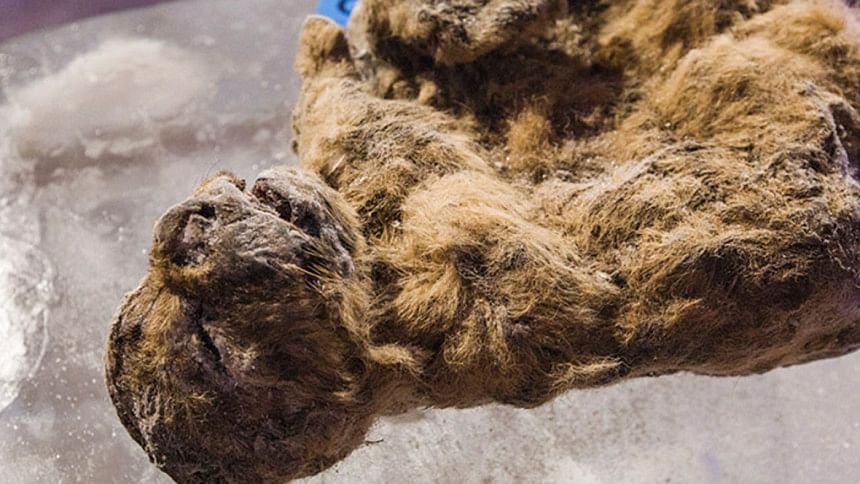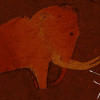12000 year old frozen lion cubs found in Siberia

Russian scientists have displayed the remains of two ancient cave lion cubs found preserved in permafrost. Dubbed Uyan and Dina, the unfortunate pair died just a few weeks after birth. Scientists say they’re the most complete remains with whiskers and all, of this extinct species ever found.
Yesterday in Yakutsk, the coldest city on Earth, the pre-historic specimens were revealed to the media in a permafrost cave, perhaps reminiscent of their natural habitat when they roamed Siberia. The cubs were placed on giant slabs of ice to ensure their preservational integrity, The Siberian Times reports.
Russian paleontologists found the cubs in Siberia’s Abyisky district on the banks of the Uyandina River, hence the names Uyan and Dina. This a very cold and northerly region located just below the Arctic Circle. The cubs were discovered by an astute scientist who noticed something embedded within a crack that had opened up due to the summer rise in river level.
Worker Yakov Androsov said: 'In one crack, we saw an ice lens with some pieces inside. We decided to take a closer look and found the cubs.'
The river is just below the Arctic Circle, some 1,045 kilometres north east of regional capital Yakutsk. 'This find, beyond any doubt, is sensational,' said Protopopov. The cubs 'are complete with all their body parts: fur, ears, soft tissue and even whiskers'. They are, he claimed, unique in the world, the most complete remains of cave lions ever found.
The cubs died only a few weeks after their birth, their eyes still not fully open. The scientists speculate that they died in a hole following a landslide. The den was sealed off from the outside, thus contributing to the exquisite preservation.
Each cub is fully intact, including the presence of soft tissue and all internal organs. Looking ahead, the researchers are planning to perform a genetic analysis, radiocarbon dating, and an MRI scan to learn more about the cave lion species, which went extinct some 12,000 years ago. It’s quite possible that the lions are older than the initial estimate.
The paleontologists quickly dismissed the idea that the DNA extracted from the cubs might be used for cloning, adding that such speculation was grossly premature. It has been suggested that woolly mammoths might someday be brought back by decoding DNA found preserved in frozen specimens reports GIZMODO.
Cave lions, or Panthera spelaea, lived during the Middle and Late Pleistocene eras. Their territory ranged across Eurasia, from the British Isles to Chutotka in the extreme east of Russia. They also lived in North America in what is now Alaska and northwestern Canada. Dwindling prey may have contributed to their eventual demise.

 For all latest news, follow The Daily Star's Google News channel.
For all latest news, follow The Daily Star's Google News channel. 








Comments